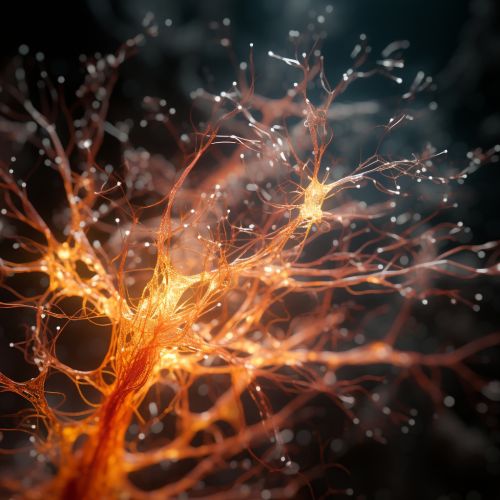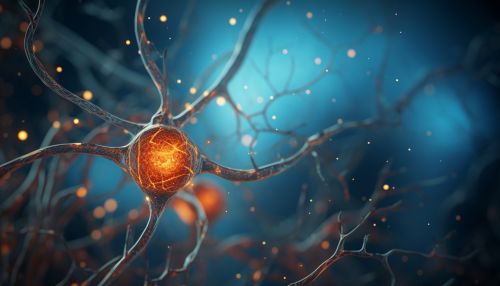Motor Neuron
Overview
A motor neuron (or motoneuron) is a type of neuron that projects its axon outside of the central nervous system (CNS) and directly or indirectly controls muscles. Motor neurons' connectivity and interactions with muscle cells are critical for physical motion. Understanding these cells provides insight into diseases like ALS, SMA, and other neurological conditions.


Anatomy
Motor neurons are typically composed of a cell body, an axon, and dendrites. The cell body houses the nucleus and other organelles vital for the neuron's function. The axon, a long and slender projection, conducts electrical impulses away from the neuron's cell body. Dendrites, on the other hand, are branched extensions that receive electrical signals from other neurons.
Cell Body
The cell body, or soma, of a motor neuron contains the nucleus, which holds the cell's DNA, and other organelles such as mitochondria and ribosomes. The cytoplasm within the cell body is where most of the neuron's metabolic activity occurs. The cell body integrates signals from dendrites and, if these signals reach a certain threshold, generates an action potential that travels down the axon.
Axon
The axon of a motor neuron can extend great distances - up to a meter in humans - to reach and control muscles. It is coated with a myelin sheath, a fatty layer that insulates the axon and speeds up the transmission of electrical signals, or action potentials. These signals trigger the release of neurotransmitters at the axon terminal, which then bind to receptors on the muscle cell, causing it to contract or relax.
Dendrites
Dendrites are tree-like extensions from the cell body that receive signals from other neurons. These signals are then transmitted to the cell body. The number and complexity of dendrites on a motor neuron can greatly influence its function, as they determine the number of inputs the neuron can process.
Types of Motor Neurons
There are two main types of motor neurons: upper motor neurons and lower motor neurons. Both types are critical for movement, but they have different roles and are located in different parts of the nervous system.
Upper Motor Neurons
Upper motor neurons originate in the motor region of the cerebral cortex or the brainstem. They carry information down to the lower motor neurons, located in the spinal cord. The axons of upper motor neurons descend in the corticospinal tract and synapse on interneurons or directly on lower motor neurons.
Lower Motor Neurons
Lower motor neurons are located in the spinal cord and brainstem. They receive input from upper motor neurons and directly innervate skeletal muscle. When a lower motor neuron is stimulated, it releases the neurotransmitter acetylcholine at the neuromuscular junction, causing the muscle to contract.
Motor Neuron Diseases
Motor neuron diseases are a group of progressive neurological disorders that destroy motor neurons. The most common of these diseases are ALS and SMA.
Amyotrophic Lateral Sclerosis
Amyotrophic lateral sclerosis (ALS), also known as Lou Gehrig's disease, is a progressive neurodegenerative disease that affects nerve cells in the brain and spinal cord. In ALS, motor neurons deteriorate or die, and the brain can no longer initiate and control muscle movement. As the disease progresses, patients may lose the ability to speak, eat, move, and breathe.
Spinal Muscular Atrophy
Spinal muscular atrophy (SMA) is a genetic disorder characterized by weakness and wasting (atrophy) in muscles used for movement (skeletal muscles). It is caused by a loss of specialized nerve cells known as motor neurons in the spinal cord and the part of the brain connected to the spinal cord (the brainstem).
